Natural Bridge State Park
Steven Dutch, Professor Emeritus, Natural and Applied Sciences, University of Wisconsin - Green Bay
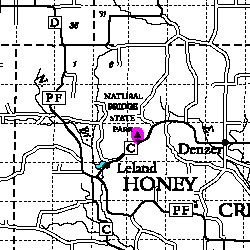 |
|
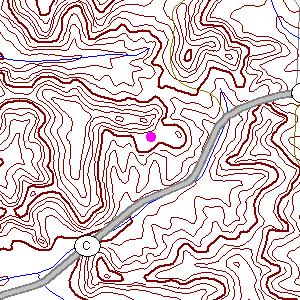 |
|
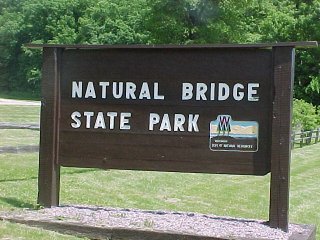 |
NW1/4 NW 1/4 Sec 17, T10N R5E, on Sauk County C about 10
miles WNW of Sauk City.
The bridge is a short (5-10 minute, 1/4 mile) hike from the parking area. |
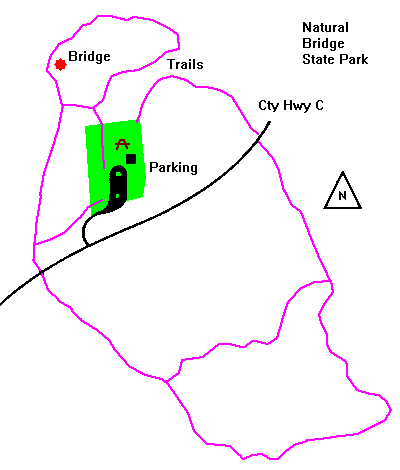
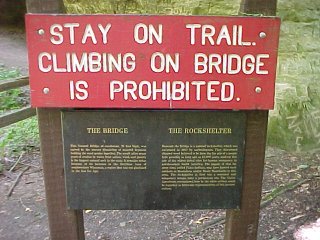 |
|
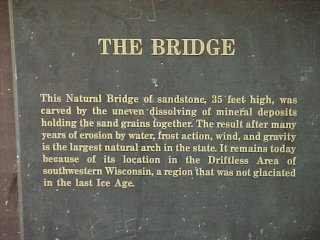 |
The Bridge This natural bridge of sandstone, 35 feet high, was carved by the uneven dissolving of mineral deposits holding the sand grains together. The result after many years of erosion by water, frost action, wind and gravity is the largest natural arch in the state. It remains today because of its location in the Driftless Area of southwestern Wisconsin, a region that was not glaciated in the last Ice Age. |
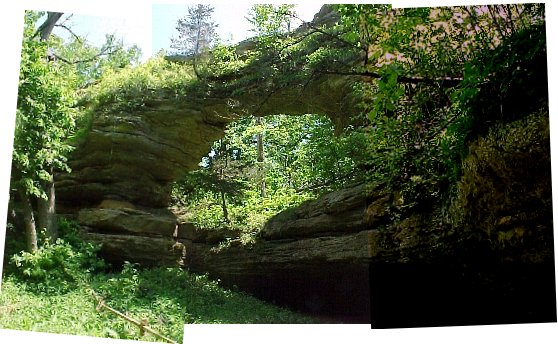
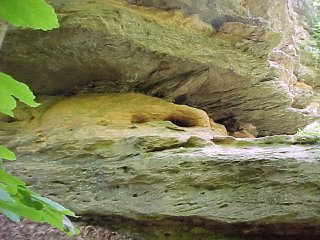 |
Close up of the sandstone. This is the Tunnel City Formation. It's cross-bedded and somewhat calcareous, perhaps beginning to transition into the overlying dolomitic St. Lawrence Formation. The rounded buff layer seems to lack calcareous cement. |
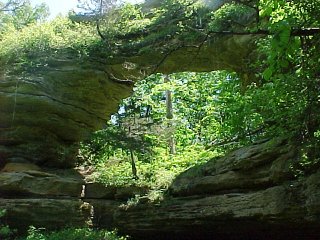
|
Unlike natural bridges, which form over streams, this arch, like those in the Southwest, is up high on a ridge. The form of the arch suggests that the sheltered north side of an outcrop weathered away because of dampness to create a grotto with an overhang, then the roof may have collapsed. |
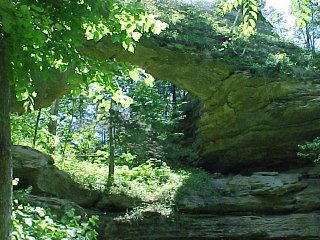 |
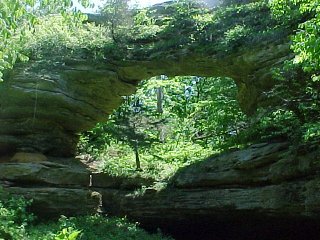 |
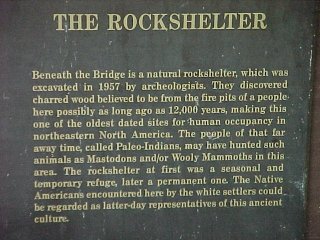 |
The Rock Shelter Beneath the Bridge is a natural rockshelter, which was excavated in 1957 by archeologists. They discovered charred wood believed to be from the fire pits of a people here possibly as long ago as 12,000 years, making this one of the oldest dated sites for human occupancy in northeastern North America. The people of thet far away time, called Paleo-Indians, may have hunted such animals as Mastodons and/or Woolly Mammoths in this area. The rockshelter at first was a seasonal and temporary refuge, later a permanent one. The Native Americans encountered here by the white settlers could be regarded as latter-day representatives of this ancient culture. |
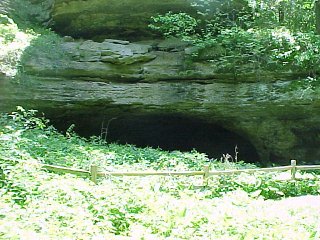 |
The rock shelter shows how sheltered portions of the rock are attacked by weathering. The arch may have once been a much larger version, whose roof then collapsed to leave a remnant arch. One wonders if the Paleo-Indians saw an arch, or whether they were able to use the entire outcrop for shelter. |
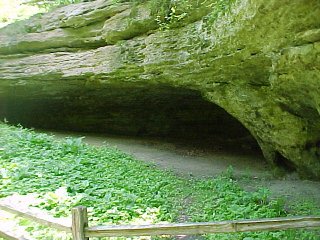 |
Return to Geology of Wisconsin Index
return to geologic localities index
Return to Professor Dutch's Home Page
Created 5 June 2001, Last Update 11 Jan 2020